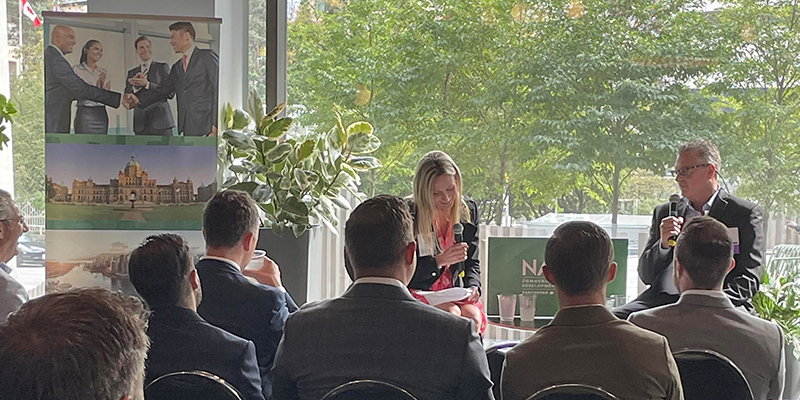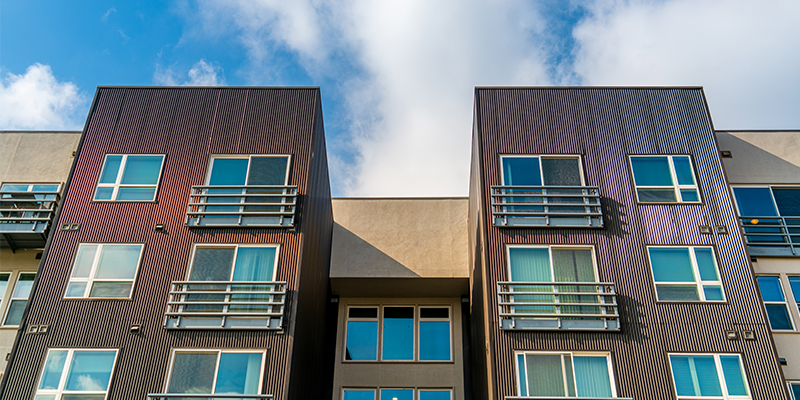Since assuming the position of NAIOP chair in January, I’ve had the pleasure of visiting chapters from Orlando to Milwaukee to SoCal, talking with thousands of members about current market conditions, the forces impacting our industry, and our future as an organization. Four topics have frequently arisen during these conversations, regardless of chapter location or size. These include:
1. Community Relations. In today’s environment, it’s essential that developers fully understand the impact of their product type on the communities in which they operate, particularly regarding the types of jobs, hours of operations and the environmental impacts of their project (traffic, water, energy, etc.). Whether developing in South Florida, New Jersey, Chicago or Los Angeles, our chapters report increased anti-growth sentiment and the importance of engaging with the community early and often.
2. E-commerce’s Role: Facility Demand and Data. E-commerce sales as a percentage of total retail sales were on a growth trajectory before the pandemic, turbocharging the industrial sector. While truck traffic associated with home deliveries has received attention from news organizations, non-governmental organizations and policymakers alike, consumer behavior as the driving force is often ignored. Further, some research suggests that ordering goods for delivery is better for the environment because people make fewer individual trips to malls, grocery stores and other local shops. Comprehensive research about e-commerce’s environmental footprint is needed to help educate our external audiences and debunk common misconceptions.
Regardless, developers need to clearly articulate e-commerce’s economic impact and the role industrial real estate plays in the community. For that sector – one I’ve been part of for four decades – it means helping policymakers, community groups, the media and the public understand that a) consumers are choosing e-commerce, which requires three times the amount of logistics space; and b) e-commerce can be a more sustainable option compared to traditional brick and mortar. In addition to the economic growth case, it’s important to explain our role as real estate developers in helping their community run smoothly and durably. We should partner with communities to underscore the importance our properties have in the ability to deliver essential goods, including baby formula, medicine, clothing and food.
3. EV Trends. In response to growing truck traffic and climate change concerns, many communities – typically on the West and East Coasts – are imposing requirements around the electrification of commercial vehicles. Southern California leads the pack.
Two years ago, Southern California’s local air quality regulatory body approved the unprecedented Indirect Source Rule (ISR), which required warehouse occupiers to quantify and report vehicle trips to and from warehouses to identify impact and be the basis for issuing taxes. Because of this, and in addition to new laws around electric vehicles at the state level, California businesses are investing heavily in electric trucks and vans and the infrastructure needed to support them.
Members from NAIOP’s California chapters, comprising the NAIOP California State Council, continue to experience the evolving spread of the ISR throughout the state. We also see other states looking at adopting similar “indirect source” concepts, including New Jersey, New York, Washington, Colorado and Nevada. NAIOP will continue to track and provide updates on this issue, as members in urban areas will no doubt keep seeing this policy impacting development projects.
4. Designing Policies with Communities. We have seen an increase in antiwarehouse development sentiment. Some communities have used moratoriums to pause new projects in response to community pushback, typically on environmental impact grounds. NAIOP and other business associations continue to make the case that such moratoriums disrupt the supply chain, hamstring businesses from operating efficiently, and create job and economic losses.
In some communities, NAIOP members have worked with city staff and the community to create good neighbor policy agreements. These volunteer agreements can address issues like setbacks, landscape screening and noise abatement strategies. In some situations, these agreements can help speed up the entitlement process and create a positive relationship with the community. Developers have found that proactively incorporating neighborhood-friendly building features is a more effective approach than having aggressive approval conditions imposed upon their projects that impede functionality and are overwhelmingly expensive if legislated upon them.
This year as NAIOP chair has been a meaningful one for me. As we begin the fourth quarter and the end of my term, I’ll continue to be steadfast in strengthening NAIOP and helping this organization and its members boldly talk about the value our industry brings to communities and the economy. I look forward to my remaining chapter visits and seeing many of you at CRE.Converge later this month in Seattle.
This piece has been adapted from the chair’s column in the fall issue of Development. Access the fall 2023 issue here.








